Redesigning How Educators Access & Act on Student Insights
District administrators and educators rely on complex data to support students—but too often, crucial trends remain buried under charts, filters, and dashboards. Insight is changing that.
Through its Key Insights feature, the platform uses AI to generate natural-language summaries and targeted recommendations for each dataset—helping users quickly understand what's happening, why it matters, and what actions to take.
Through its Key Insights feature, the platform uses AI to generate natural-language summaries and targeted recommendations for each dataset—helping users quickly understand what's happening, why it matters, and what actions to take.

Our Primary Role
AI-Enhanced UX Strategy
Led the integration of AI across key workflows, designing intelligent features that adapt to user behavior and deliver contextual insights in real-time.
Insight-Driven Design
Conducted in-depth analysis using platform data and usability research to identify friction points and optimize AI recommendations for caseworkers and admins.
System Thinking & Scalability
Designed modular components and workflows that allowed AI-generated insights to scale across multiple views, reports, and user personas with minimal friction.
Project Impact
15%
Reduction in chronic absenteeism through early intervention strategies
10%
Increase in student engagement by providing personalized learning insights
25%
Faster identification of at-risk students using AI-driven attendance and behavioral pattern analysis
20%
Improvement in course enrollment efficiency by predicting student demand for advanced courses
30%
Reduction in administrative workload with automated attendance tracking and reporting
50%
Increase in intervention success rates by leveraging predictive analytics for student support
The Problem
Crucial Insights get Buried Deep
Schools and districts struggle with fragmented data systems that fail to provide real-time insights into attendance patterns, course enrollment trends, and student engagement. Without a centralized and predictive analytics platform, educators face difficulties in identifying at-risk students, optimizing course planning, and implementing timely interventions. These gaps result in increased absenteeism, inefficient resource allocation, and missed opportunities to support student success.
The Proposed Solution
The Data needs to Enforce Quick Actions
Insight AI leverages AI-powered analytics to transform raw student data into actionable insights. By integrating attendance tracking, predictive course planning, school climate analysis, and custom group management, the platform empowers educators to make informed decisions. AI-driven recommendations help schools intervene early, improve student engagement, and allocate resources more effectively—ultimately driving better academic outcomes.


Design Process

User Research
Understanding Friction, Gaps, and Missed Opportunities in Student Data
We conducted 12+ interviews and multiple contextual inquiry sessions with school administrators, academic counselors, and district data specialists to uncover critical pain points in accessing, analyzing, and acting on student data. Our goal was to understand how information bottlenecks, disconnected dashboards, and lack of AI summarization were impacting decision-making, student outcomes, and staff efficiency.
Primary User Needs

Quickly understand patterns and risks across large student populations without manual deep dives

Generate contextual, AI-powered summaries to streamline collaboration and decision-making

Proactively detect trends like chronic absenteeism and academic dips to intervene early
I have to juggle five different tools to answer a simple question about a student's attendance and grades.

Angela Kim Assistant Principal at Edison High School
By the time I find the right data, the moment to act on it has usually passed.

John Chambers Academic Counselor at Brooklyn STEM Academy
What's frustrating is that all the data is there, but it's scattered—nothing brings it all together in a way that actually helps me.

Melissa Rodriguez District Data Analyst at NYC DOE
We miss signs of academic risk because it's buried in spreadsheets—something smarter should be surfacing that.

Jordan Ellis Dean of Student Support at Queens Learning Center
Prototypes
AI-Powered Attendance Intelligence
The Key Insights panel uses AI to detect attendance anomalies, identify high-risk student patterns, and generate real-time summaries based on subgroup disparities. By automating this analysis, the system flags critical insights—like sudden attendance drops or transportation-related disruptions—and offers suggested actions without requiring manual data exploration. This ensures school staff can focus their efforts where they’re needed most, accelerating interventions and improving student outcomes.
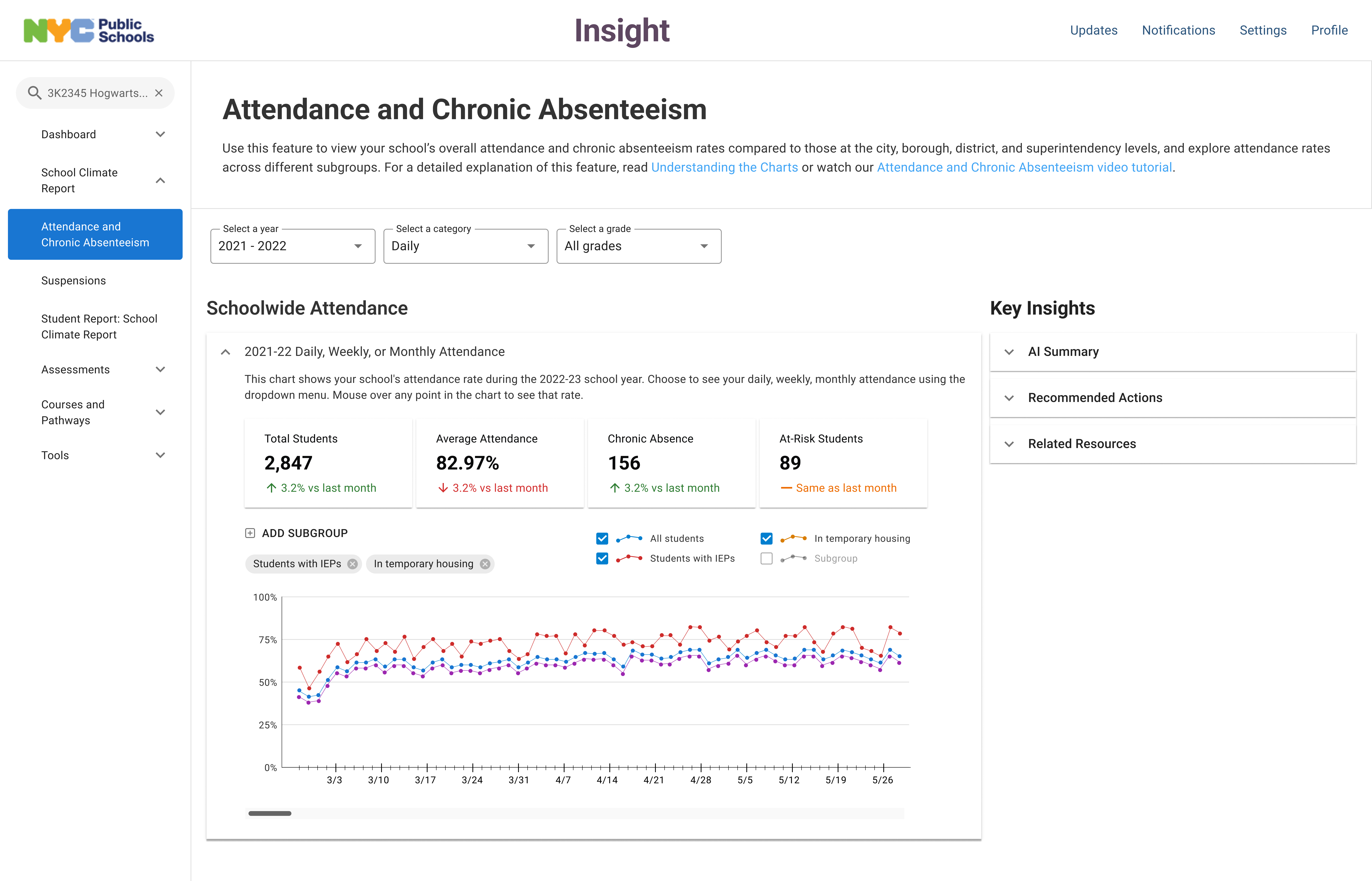
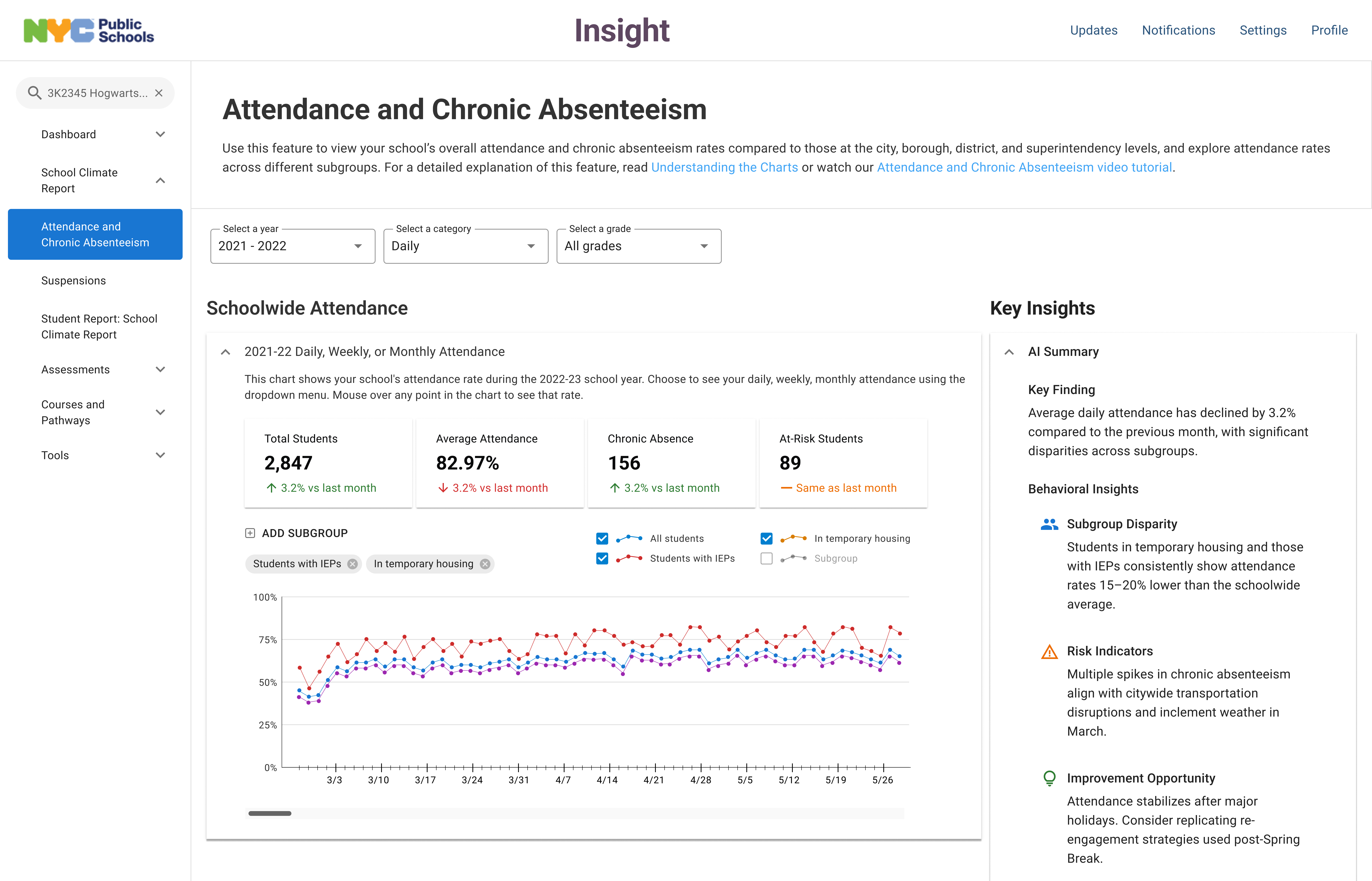
AI-Driven Equity Insights in Advanced Coursework
The AI-powered dashboard highlights patterns in advanced course enrollment and flags equity gaps—like low female participation in STEM or uneven access across student groups. It surfaces key insights and suggests actions, helping schools make data-informed decisions to promote fairness and expand opportunities.
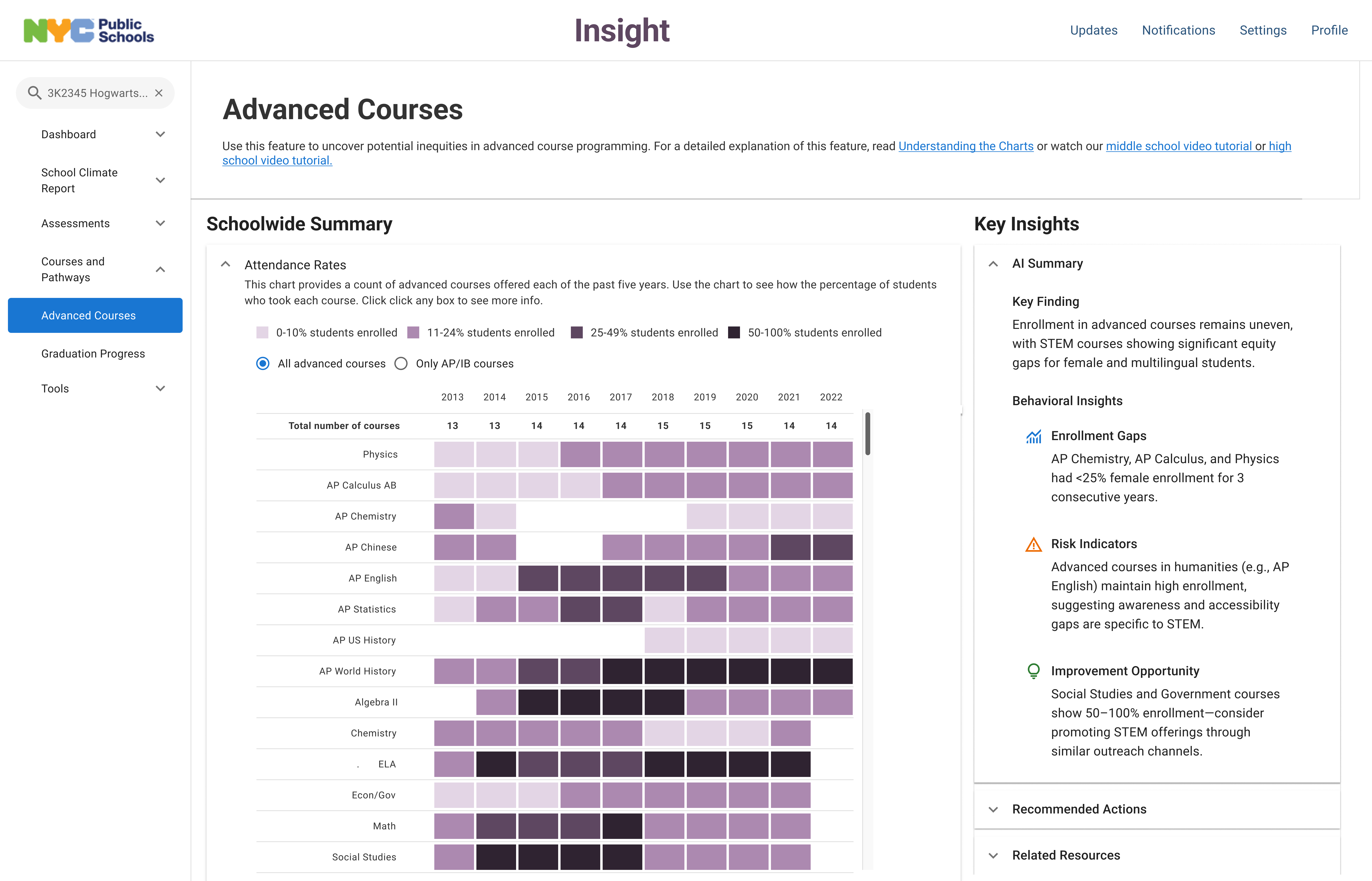
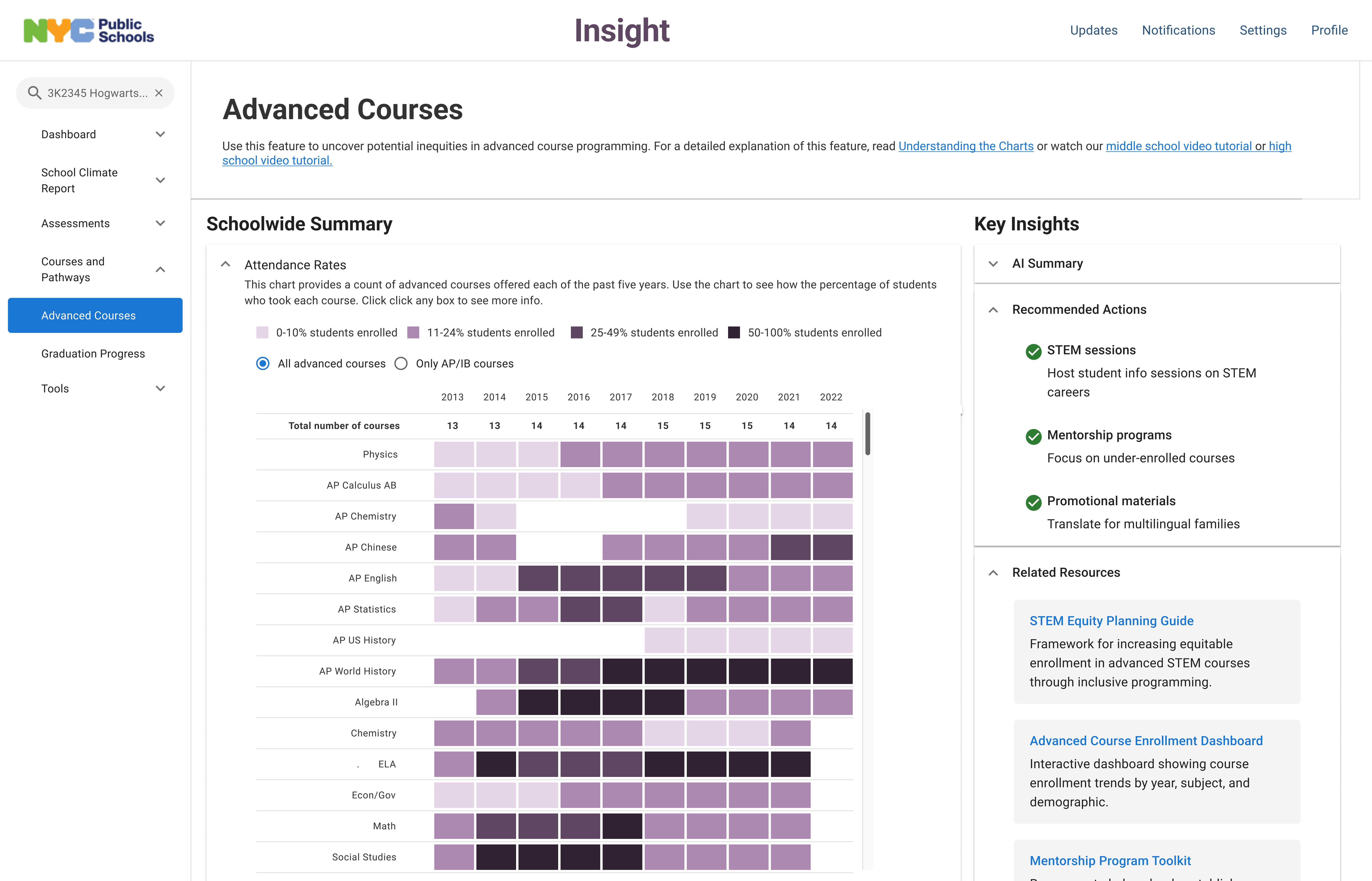
AI-Enhanced Custom Group Creation
The Custom Group Creator uses AI to identify clusters of high-risk schools based on key indicators like assessment scores and suspension rates. It helps staff quickly build targeted groups for interventions, making it easier to prioritize support where it’s needed most.
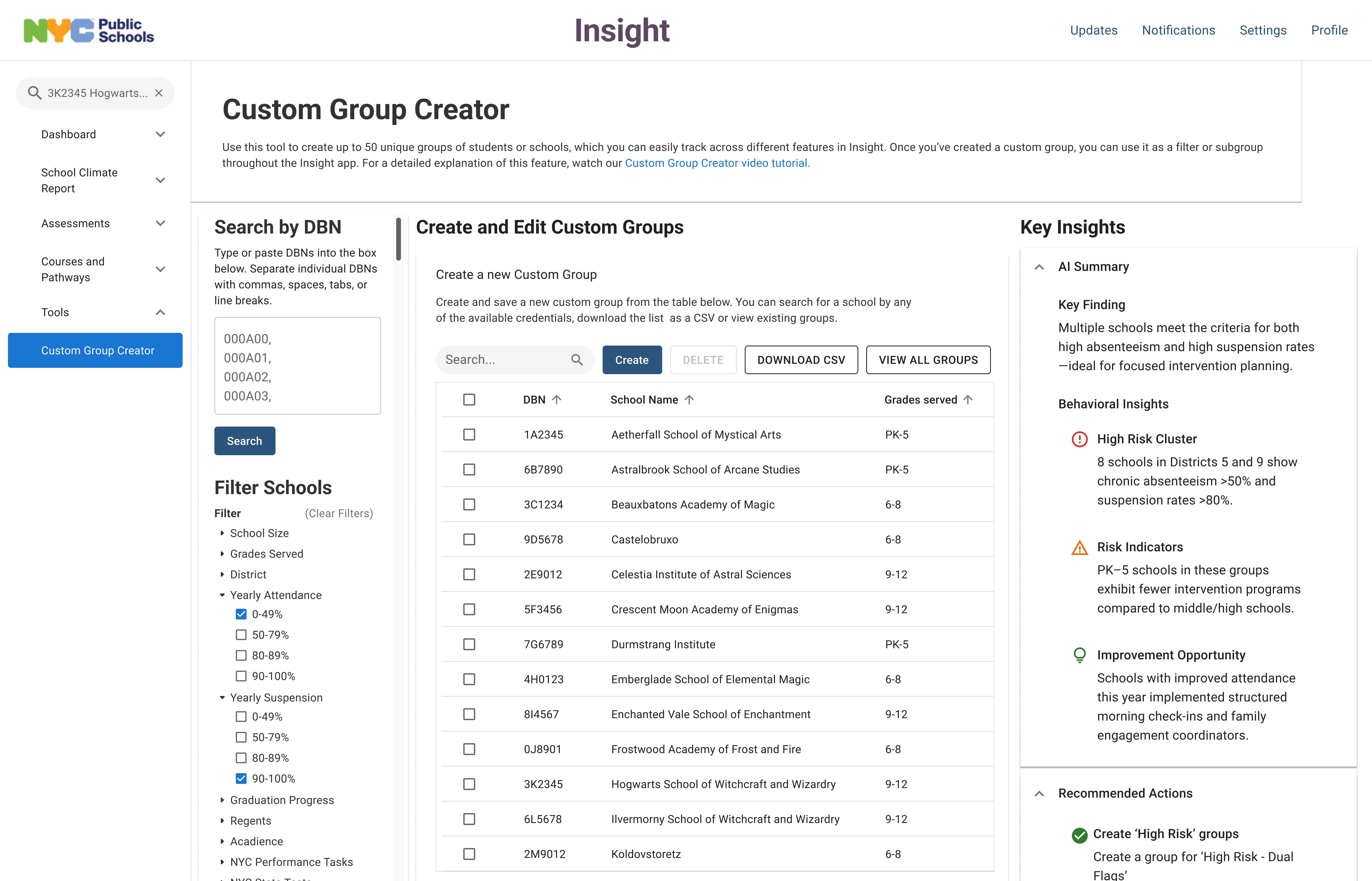
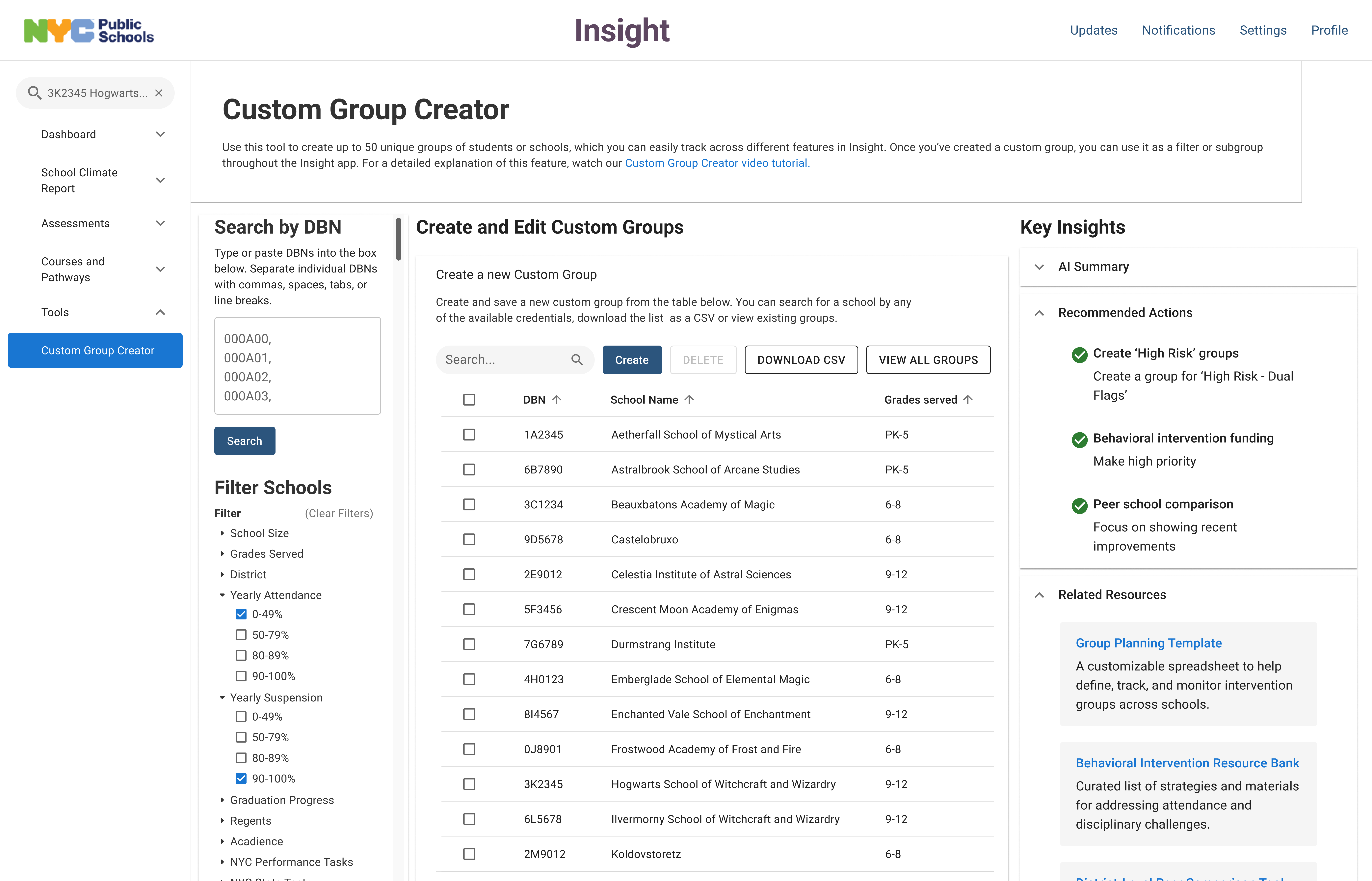
AI-Backed Student Climate Monitoring
The School Climate Report uses AI to detect attendance patterns and behavioral trends across the school year. It highlights risk periods, identifies students in need of support, and recommends timely interventions—helping schools address chronic absenteeism and improve engagement more effectively.
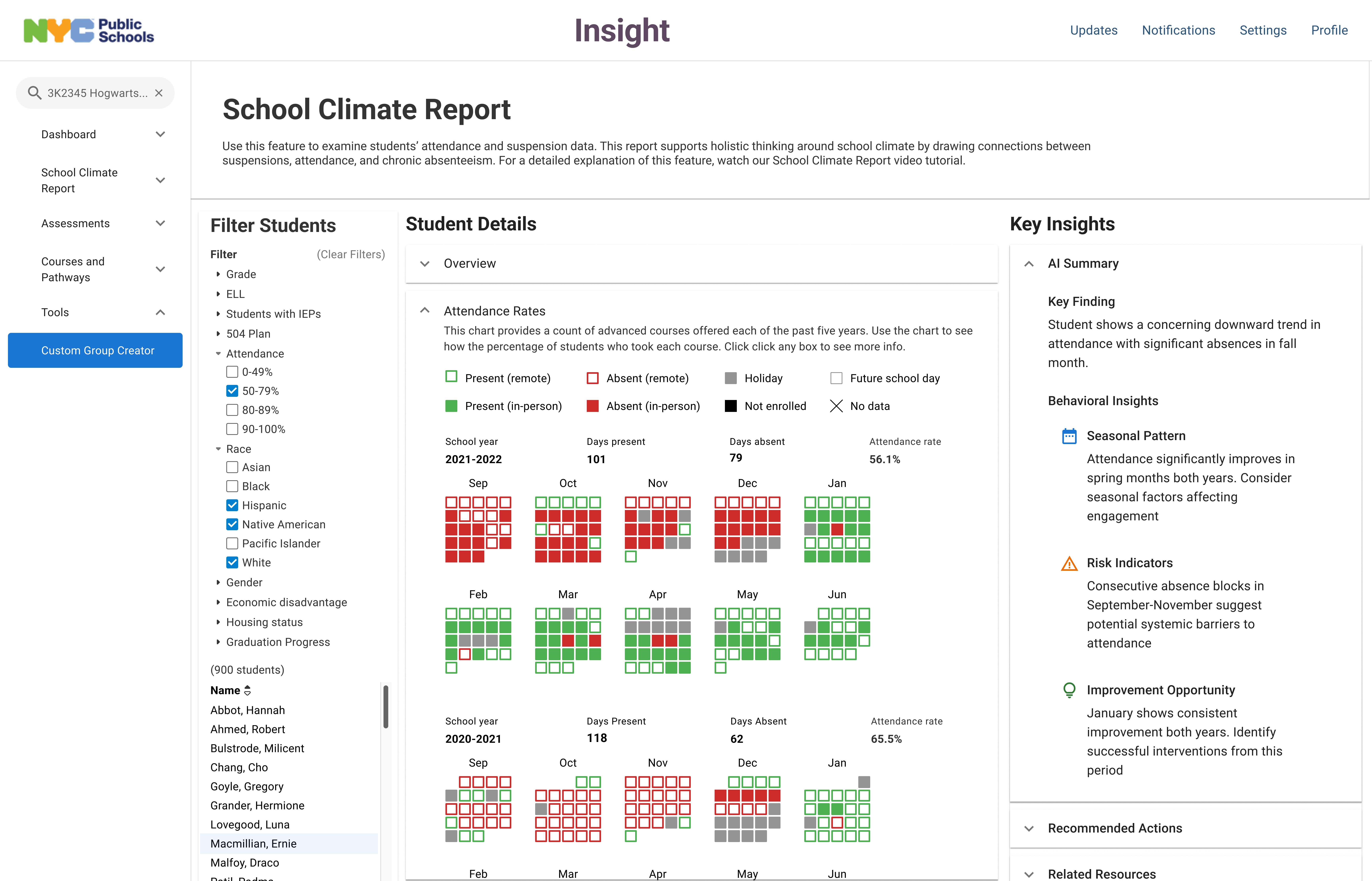
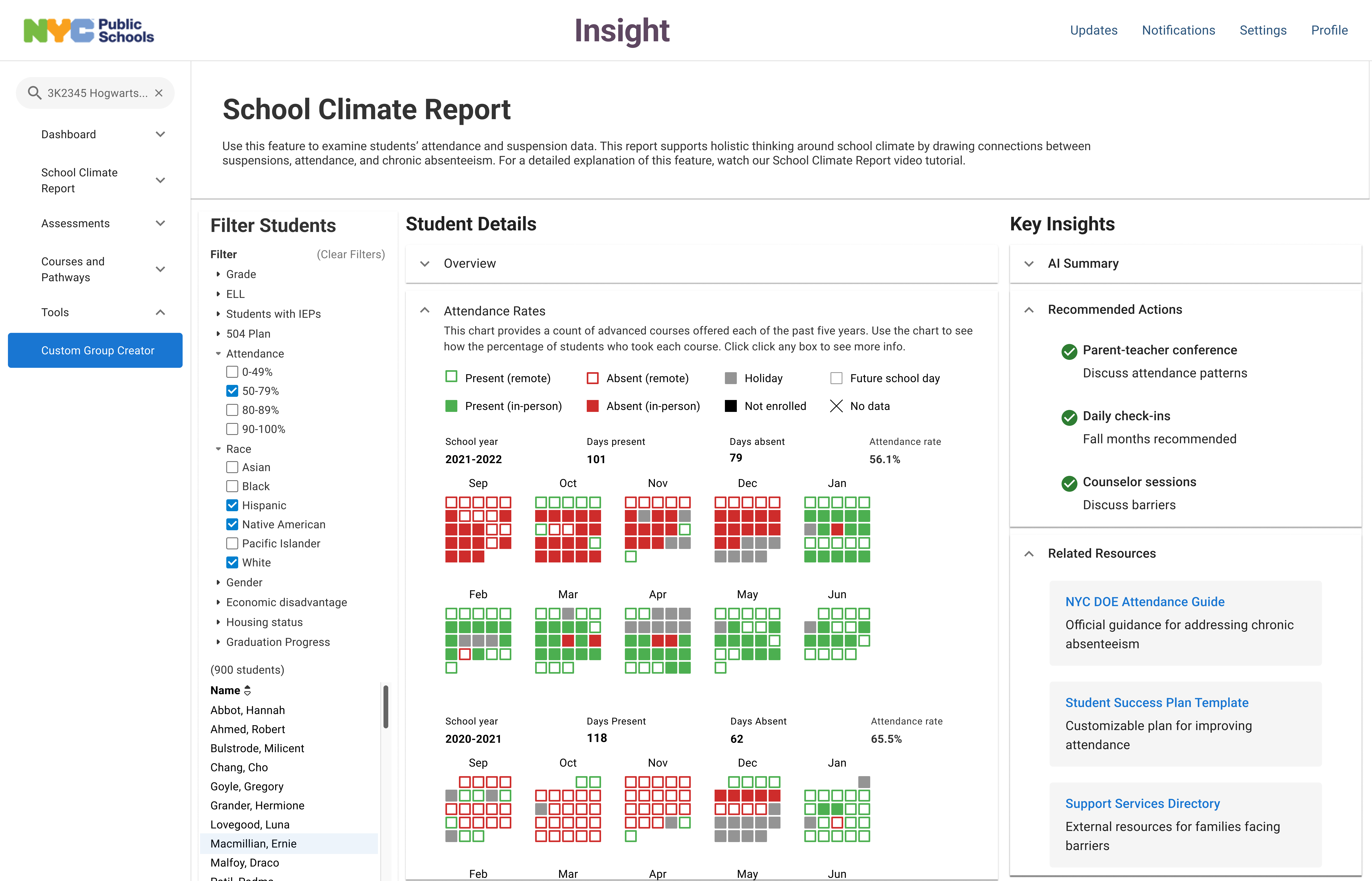
Conclusion
Designing with Insight:
Human-Centered AI for Education
Designing the Insight platform challenged us to balance powerful AI automation with trust, clarity, and usability for educators. Rather than overwhelming users with data, we focused on surfacing the right insights—at the right time—for the right people. From detecting chronic absenteeism to flagging equity gaps in advanced courses, our goal was to help schools move from reactive to proactive decision-making.
This work reaffirmed our belief that AI should serve as a quiet partner—amplifying human judgment, not replacing it. When designed responsibly, AI can unlock faster interventions, fairer outcomes, and more confident decisions in public education.
Learning Outcomes
- Automated key processes, reducing the manual workload for staff
- Enhanced caseworker productivity by simplifying complex tasks
- Ensured that organizational practices align with regulatory standards
- Transformed interaction with clients, providing timely and personalized services
- Enabled the organization to harness data more effectively
